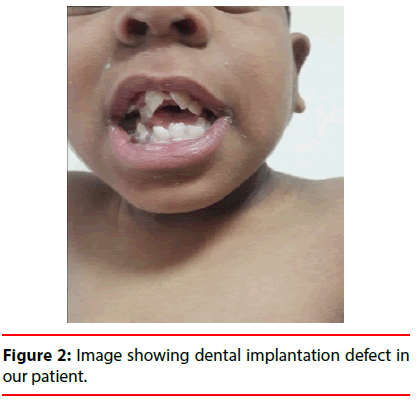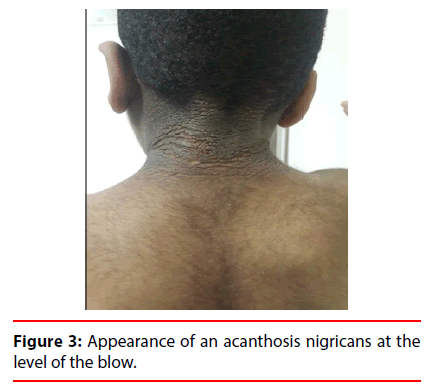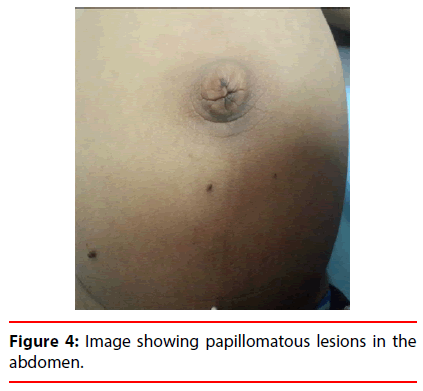Costello Syndrome About a New Case
- Corresponding Author:
- Mounia Bennani
Department of Dermatology, CHU Hassan II, Morocco
E-mail: mouniaabennani24@gmail.com
Abstract
Costello syndrome, also known as a facialcutaneous- skeletal syndrome, is a rare anomaly of the original development of autosomal dominant inheritance. Its diagnosis is essentially clinical. The prevalence of this syndrome is unknown, but about 250 have been reported in the literature. We are reporting a new case of a 5-year-old child from a non-consanguineous marriage with cesarean childbirth for hydramnios, operated for nasal growth at the age of 21 and glaucoma at the age of 20 months. Admitted in our consultation for the management of papillomatous lesions appeared at the age of 24 months gradually increasing in size.
Clinical-Medical Image
Costello syndrome, also known as a facialcutaneous- skeletal syndrome, is a rare anomaly of the original development of autosomal dominant inheritance. Its diagnosis is essentially clinical. The prevalence of this syndrome is unknown, but about 250 have been reported in the literature.
We are reporting a new case of a 5-year-old child from a non-consanguineous marriage with cesarean childbirth for hydramnios, operated for nasal growth at the age of 21 and glaucoma at the age of 20 months. Admitted in our consultation for the management of papillomatous lesions appeared at the age of 24 months gradually increasing in size. The general examination found a child in good intellectual condition, a retarded weight-loss at -2 DS, aged face, and epicanthus, anteverted nostrils, low implanted ears, with wide lobes, and a macrostomy, thick lips, and poor dental implantation with a short neck (Figures 1 and 2).
Dermatologic examination showed diffuse xerosis with a chalazodermal appearance of the skin, acanthosis nigricans in the inguinal axillary at his neck folds (Figure 3), trunk and back hypertrichosis, papillomatous lesions in the abdomen (Figure 4) and the trunk, a slight palmar-plantar keratoderma, with deep folds.
Discussion
The diagnosis of Costello’s syndrome lies at the forefront of the clinic. A notion of hydramnios during pregnancy, macrosomia at birth and episodes of hypoglycemia are often found. The postnatal stunting is very marked, it is related to dietary difficulties during the first months of life. A facial dysmorphic is specific to this syndrome, it includes macrocephaly, epicanthus, strabismus, myopia, a flattened nose root with a small bulbous nose, low implanted ears, fleshy lips, macroglossia with dental anomalies and a short neck. There is also a cutaneousphanereal involvement made of cutaneous hyperpigmentation, flabby skin, abundant in the neck, palms of the hands, soles of the feet and fingers (we call it about “cutis laxa”), Some children present on the body thickened and dark skin areas (acanthosis nigricans). In addition, small skin growths resembling warts and called “papillomata” may appear most often around the nose, mouth and/or anus. It is one of the most characteristic manifestations of Costello’s syndrome, but it may appear late (between two years and the end of adolescence).



